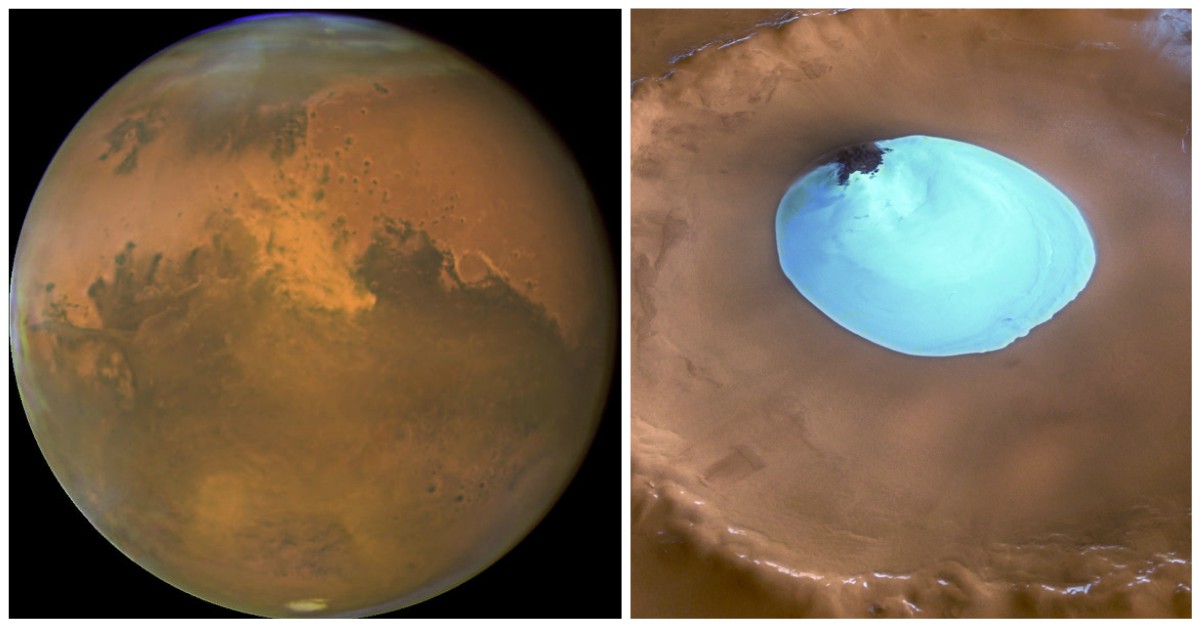
Ice below Martian surface could hint towards possibility of life
Since ages, Mars has displayed the potential for the possibility of life beyond Earth and a recent discovery just might amp up the feasibility a bit further. Scientists have successfully located sheets of ice beneath the dusty surface of Mars. The Red Planet was speculated to house water on the surface millions of years ago which somehow evaporated from the surface leaving the planet dry and dusty. Scientists have discovered that some of this water is still trapped inside the Martian soil in the form of ice.
As per the findings, the planet might flaunt around 300 feet thick layer of ice at certain locations of the planet which are termed as “scarps”. The scarps are slopes or steep banks in the surface of the planet Mars. The scarps usually reflect a blue-black color which could potentially negate the evidence water studied by scientists due to the reflection of similar colors by both water and the scarps. This find could be a fabulous achievement as it will expand our understanding of the planet. It would also help generate new leads to search for the potential of life and provide required resources for the future of manned mission to Mars.
Researchers examined around eight scarps in the surface of the Red Planet. It has been long known by the scientists that the Martian surface holds water somewhere with different theories as to where it went.
Erosion of soil on Mars has led to the exposure of ice beneath the surface. These ice sheets start just one to two meters below the surface while extending more than 100 meters. Scientists have stated that ice is a major target when it comes to exploration of planets in our solar system and even beyond. It holds the potential to affect the geomorphology of the planet while preserving the history of the planet’s climate.
The presence of ice or water on Mars was highly evident from a long time, however, the thickness, extent, and purity of the ice weren’t confirmed by the scientists. The steep angles and fractures along the surface suggest that the ice is strong and deeply rooted. Apart from that numerous bands observed on the ice suggest that it contains a series of visible layers. This could be a useful resource to understand the climate of Mars and how it changed over time. The layering suggests that Mars once had a climate that supported snowfall which resulted in ice getting accumulated on top of each other.
The scientists suggest that these ice sheets might have formed very recently which was evident from the presence of craters on the surface of these particular sites. The results were obtained after obtaining images from the Martian surface over a period of three consecutive years. The images revealed that massive blocks of rocks fell from the ice sheets as the surface soil eroded due to the melting of ice. The researchers calculated that the ice is reducing in size by certain millimeters every year during the summer season exposing the inner areas of the ice.
Researchers also suggest that the ice could be even more extensive in reach than observed from the satellite data. This could open up several gateways into the future of mankind and the possibility of sustaining life on the Red Planet.


